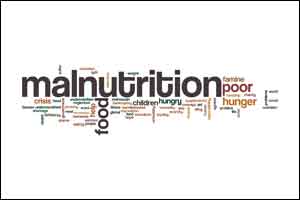- Home
- Medical news & Guidelines
- Anesthesiology
- Cardiology and CTVS
- Critical Care
- Dentistry
- Dermatology
- Diabetes and Endocrinology
- ENT
- Gastroenterology
- Medicine
- Nephrology
- Neurology
- Obstretics-Gynaecology
- Oncology
- Ophthalmology
- Orthopaedics
- Pediatrics-Neonatology
- Psychiatry
- Pulmonology
- Radiology
- Surgery
- Urology
- Laboratory Medicine
- Diet
- Nursing
- Paramedical
- Physiotherapy
- Health news
- Fact Check
- Bone Health Fact Check
- Brain Health Fact Check
- Cancer Related Fact Check
- Child Care Fact Check
- Dental and oral health fact check
- Diabetes and metabolic health fact check
- Diet and Nutrition Fact Check
- Eye and ENT Care Fact Check
- Fitness fact check
- Gut health fact check
- Heart health fact check
- Kidney health fact check
- Medical education fact check
- Men's health fact check
- Respiratory fact check
- Skin and hair care fact check
- Vaccine and Immunization fact check
- Women's health fact check
- AYUSH
- State News
- Andaman and Nicobar Islands
- Andhra Pradesh
- Arunachal Pradesh
- Assam
- Bihar
- Chandigarh
- Chattisgarh
- Dadra and Nagar Haveli
- Daman and Diu
- Delhi
- Goa
- Gujarat
- Haryana
- Himachal Pradesh
- Jammu & Kashmir
- Jharkhand
- Karnataka
- Kerala
- Ladakh
- Lakshadweep
- Madhya Pradesh
- Maharashtra
- Manipur
- Meghalaya
- Mizoram
- Nagaland
- Odisha
- Puducherry
- Punjab
- Rajasthan
- Sikkim
- Tamil Nadu
- Telangana
- Tripura
- Uttar Pradesh
- Uttrakhand
- West Bengal
- Medical Education
- Industry
First-ever nutrition policy soon for severe acute malnourished children

New Delhi: In a first, the government will soon release a nutrition policy for severe acute malnourished (SAM) children, a senior official said.
The World Health Organisation (WHO) had in 2006 defined severe acute malnutrition as very low weight for height visible by severe wasting, or by the presence of nutritional oedema.
According to Dipa Sinha, an activist from the Right to Food Campaign, the country doesn't have a protocol for treating a majority of SAM children.
"Generally, it is known that 15-20 percent SAM children can be treated in a hospital and the rest can be treated in the community. We have guidelines for facility management under National Rural Health Mission but we don't have guidelines for community management," Sinha said.
As per the National Family Health Survey (NFHS) 4, 7.5 percent of total children were found to be severely wasted, up from 6.4 during NFHS 3. The total number of such children in the country is at 93 lakh.
The National Nutrition Policy, 1994, deals with protein-energy malnutrition, iron deficiency, iodine deficiency, vitamin A deficiency and low birth weight children. SAM as a condition was identified only in subsequent years.


